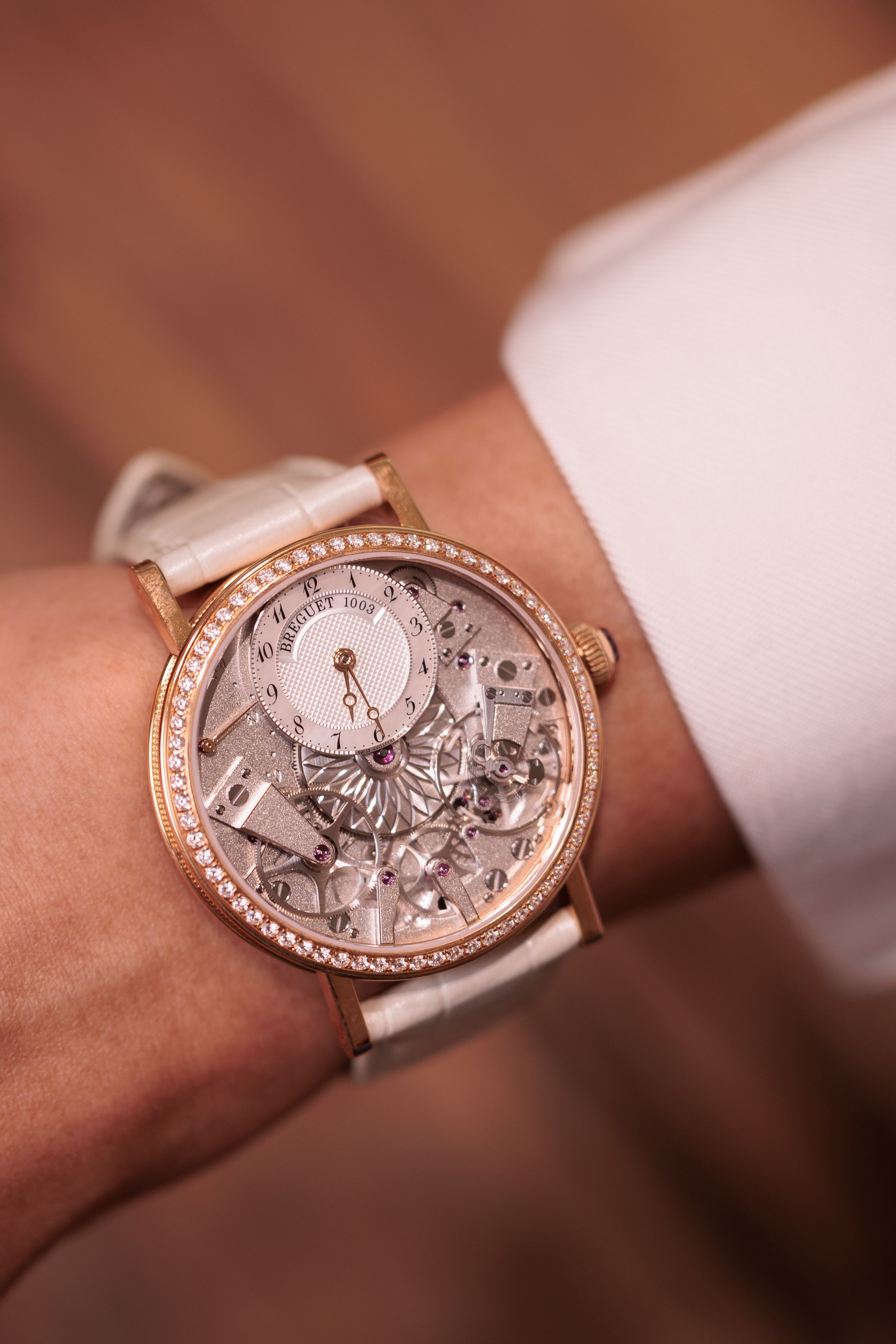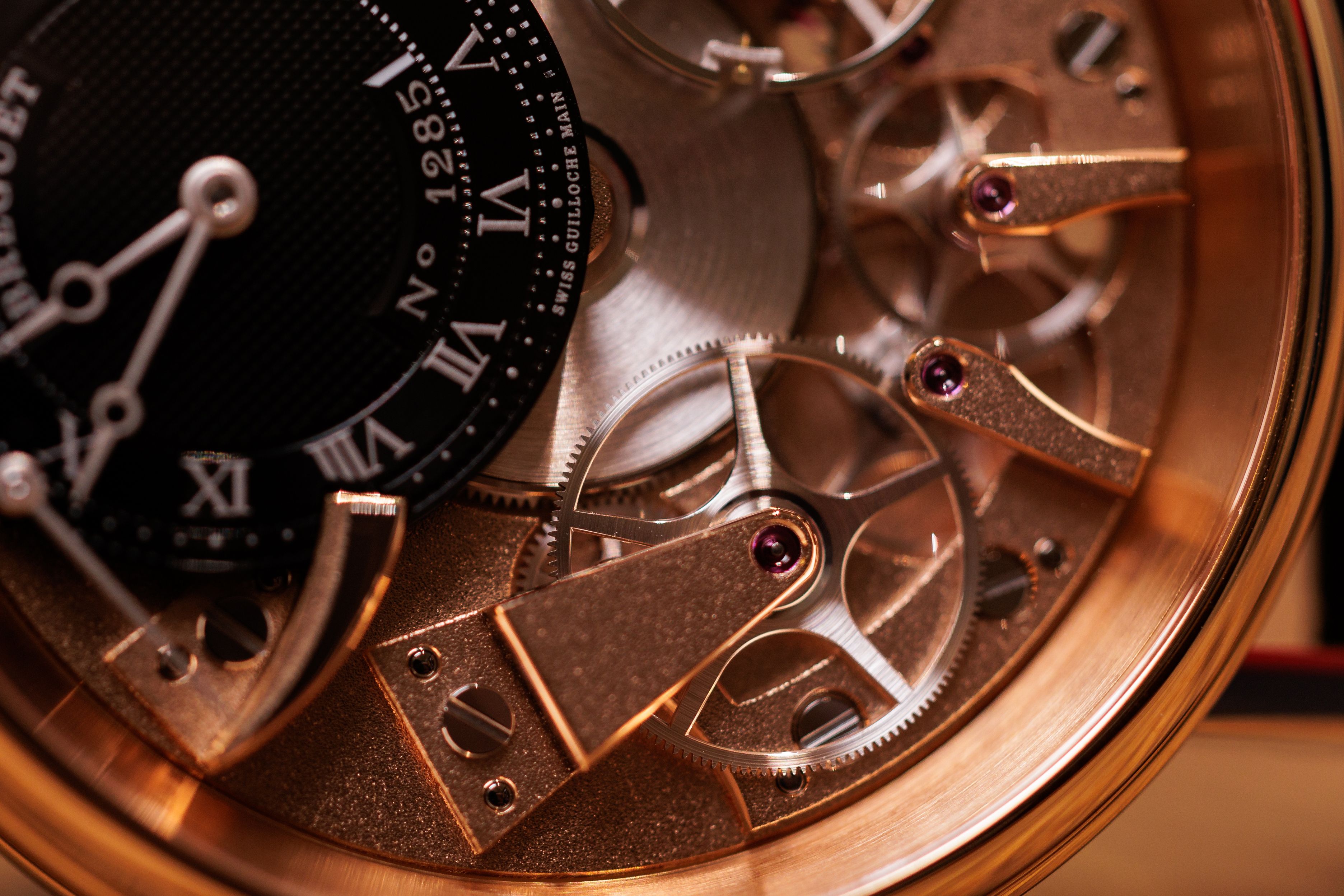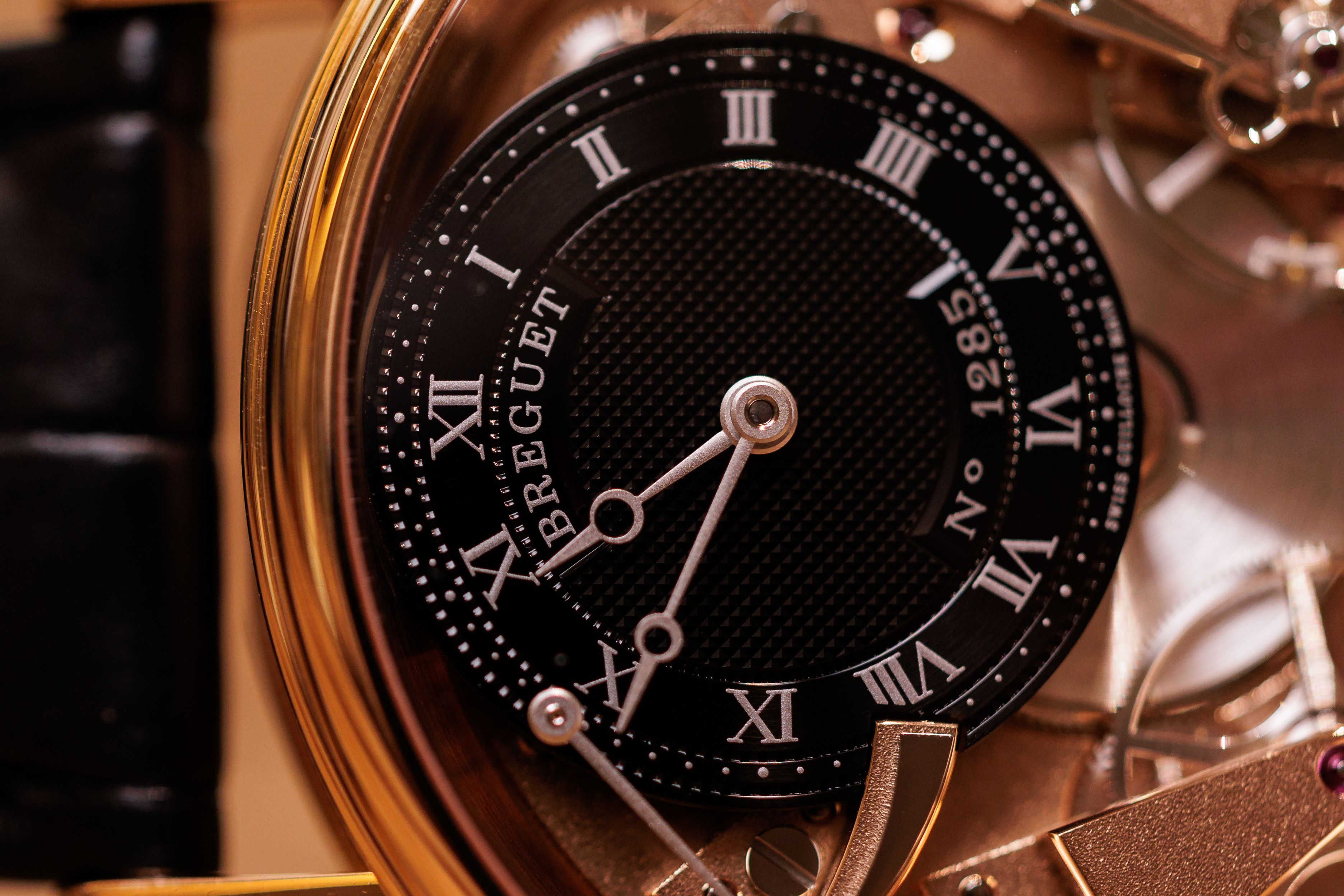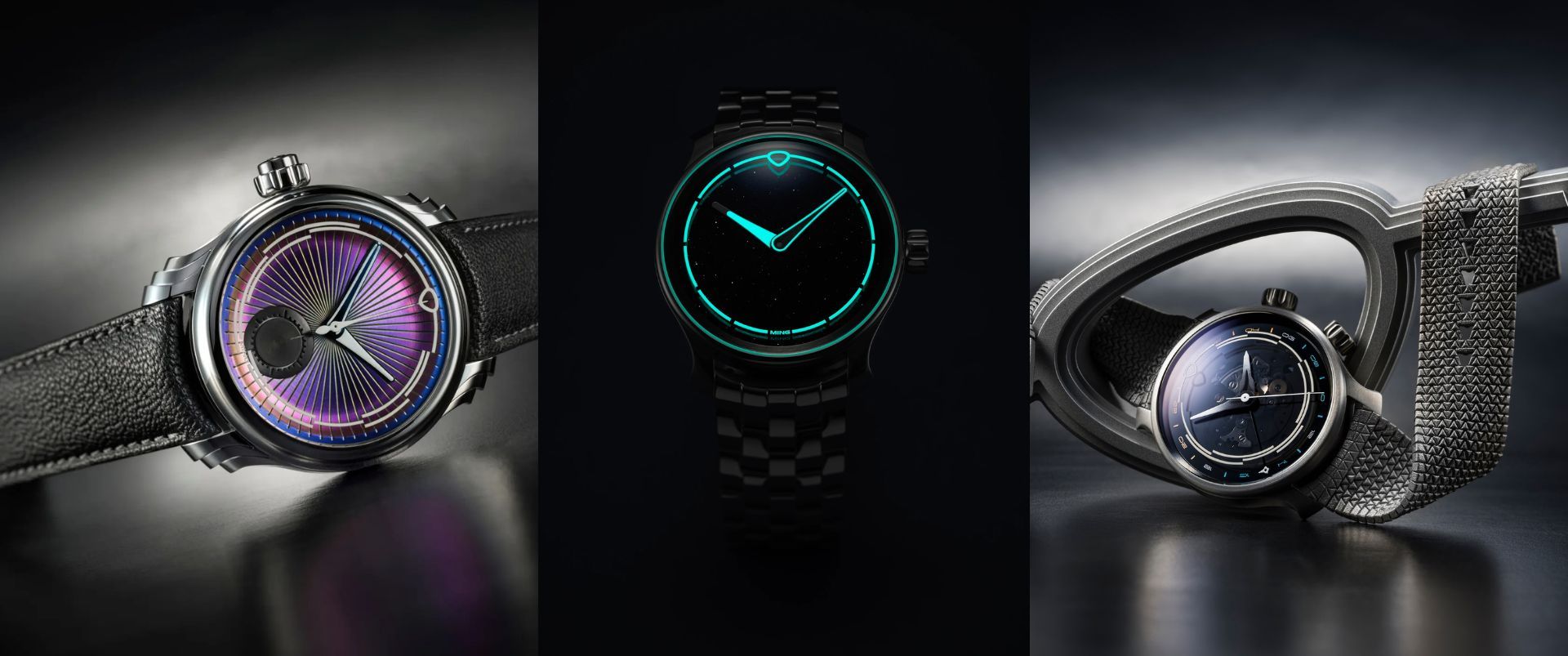Breguet's Tradition Collection And The Architecture Of Exposed Movements
The contemporary interpretation of historical watchmaking presents unique technical challenges, particularly when executing exposed movement architecture. Breguet's Tradition collection, which draws direct lineage from the subscription watches of 1796, demonstrates how modern haute horlogerie can successfully integrate historical mechanisms with contemporary manufacturing tolerances.

The foundational model Ref. 7057BR exemplifies the technical complexity inherent in exposed movement design. At its core, the calibre features an inverted movement architecture with central bridges, showcasing the pare-chute shock protection system mounted at dial level. The movement's architecture deliberately positions the going train and escapement above the mainplate, necessitating exceptional finishing given their visibility. Through the symmetrical power distribution from the mainspring barrel, the manual-winding mechanism achieves a 50-hour power reserve while maintaining a balance frequency of 21,600 vph (3 Hz). The anthracite treatment of the bridges serves both aesthetic and practical purposes, providing contrast while protecting against oxidation.
The execution demands extraordinarily precise manufacturing tolerances. Bridge mounting points require machining to tolerances of 2/100mm, while wheel train pivot holes undergo diamond polishing to reduce friction. The multiple-layer galvanic treatment ensures consistent coloration across all components, complemented by hand-chamfered edges on all visible elements. The circular graining, executed at 1200 rpm, achieves optimal texture that reflects light in a manner consistent with historical examples while meeting modern finishing standards.

In the ladies' reference, the Ref. 7038BR/18/9V6/D00D introduces several technical refinements to the basic architecture. The integration of a retrograde seconds mechanism coexists with a sophisticated silicon balance spring technology, while a modified automatic winding system with peripheral rotor demonstrates Breguet's ability to innovate within historical constraints. The reconfigured bridge architecture accommodates a bezel setting of 68 VVS1 brilliant diamonds of D-F color, requiring structural modifications that do not compromise the movement's technical integrity.

The movement finishing protocols for both references represent the pinnacle of modern watchmaking capability. External components receive treatments that honor historical techniques while incorporating modern precision. The case middle features straight graining at precise 45-degree angles, while the bezel of the Ref. 7057BR displays engine-turning with extraordinarily fine line density. Within the movement, bridges receive hand-chamfering that extends to internal angles, wheels feature circular graining with diamond-polished sinks, and even the smallest screws undergo extensive finishing with polished heads and chamfered slots.
The implementation of historical movement architecture within modern cases presents significant technical hurdles. Engineers must maintain proper amplitude despite the exposed balance, develop sophisticated dust protection protocols for exposed wheel trains, and ensure thermal compensation in precious metal cases. These challenges find resolution through precise engineering tolerances, including minimized case joint tolerances of 0.05mm and an enhanced pare-chute system that builds upon Breguet's historical innovation.

Manufacturing protocols for the Tradition line balance modern precision with traditional handcraft. While initial components emerge from CNC production, extensive hand-finishing of all visible surfaces follows. Each timepiece undergoes individual timing adjustment over a minimum of 15 days, with multiple quality control stages at varying atmospheric pressures ensuring both aesthetic and functional excellence.
Chronometric performance adheres to stringent standards. Both references undergo adjustment in five positions, achieving isochronism deviation of less than two seconds per day and positional variation under four seconds across positions. Power reserve consistency maintains within 5% of nominal rating, while temperature compensation ensures stable performance from 8°C to 38°C.

The technical execution of Breguet's Tradition line ultimately demonstrates the complex interface between historical movement architecture and modern manufacturing capabilities. These references successfully implement contemporary innovations while maintaining precise aesthetic allegiance to their historical antecedents. The result represents a significant technical achievement in modern haute horlogerie, particularly in the context of exposed movement architecture and precision finishing protocols. Through this collection, Breguet proves that historical inspiration need not constrain technical excellence, but rather can serve as a foundation for advancing the art of watchmaking.
No articles found





